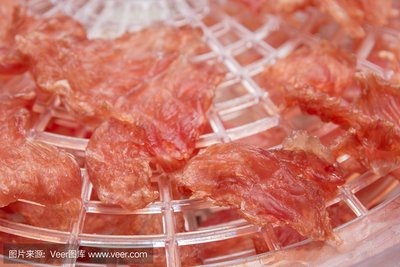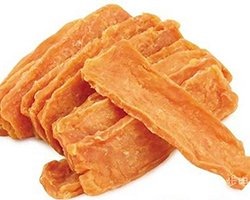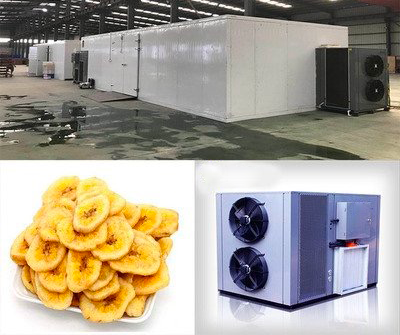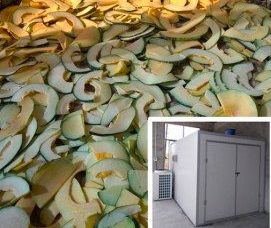
Content Menu
● Understanding Heat Pump Dryers
>> How Heat Pump Dryers Work
● Traditional Dryers: An Overview
>> Limitations of Traditional Dryers
● Comparing Heat Pump Dryers and Traditional Dryers
>> Energy Efficiency
>> Temperature Control
>> Cost-Effectiveness
>> Versatility
● Applications in Food Processing
● Advantages of Heat Pump Dryers in Food Processing
● Challenges and Considerations
● Conclusion
● Frequently Asked Questions
>> 1. What is the main advantage of heat pump dryers over traditional dryers?
>> 2. Can heat pump dryers be used for all types of food?
>> 3. What is the typical drying temperature for heat pump dryers?
>> 4. Are heat pump dryers environmentally friendly?
>> 5. What should I consider when purchasing a heat pump dryer?
In recent years, the demand for efficient and sustainable drying solutions has surged, particularly in the food processing industry. As a leading manufacturer of food drying machines in China, we provide OEM services to international brands, wholesalers, and producers. This article will explore the comparison between heat pump dryers and traditional dryers, focusing on their applications in food drying, energy efficiency, and overall performance.

Understanding Heat Pump Dryers
Heat pump dryers are a modern solution that utilizes a refrigeration cycle to dry products. Unlike traditional dryers that expel hot air, heat pump dryers recycle the air within the system, making them more energy-efficient. They operate at lower temperatures, which is particularly beneficial for drying sensitive food products without compromising their quality.
How Heat Pump Dryers Work
Heat pump dryers work by extracting moisture from the food products and transferring it to a refrigerant. The refrigerant is then compressed, raising its temperature, and passed through a heat exchanger where it releases the moisture outside. This process not only conserves energy but also maintains the integrity of the food being dried.
Traditional Dryers: An Overview
Traditional dryers, such as vented and condenser dryers, have been the go-to option for many years. Vented dryers expel hot, moist air outside, while condenser dryers collect moisture in a tank. While these dryers are effective, they often consume more energy and can lead to higher operational costs.
Limitations of Traditional Dryers
1. Energy Consumption: Traditional dryers typically use more energy due to their reliance on high temperatures and constant air expulsion.
2. Quality of Drying: The high temperatures can damage sensitive food products, leading to loss of flavor, color, and nutritional value.
3. Environmental Impact: The increased energy consumption contributes to a larger carbon footprint, making them less environmentally friendly.
Comparing Heat Pump Dryers and Traditional Dryers
Energy Efficiency
One of the most significant advantages of heat pump dryers is their energy efficiency. They can reduce energy consumption by up to 50% compared to traditional dryers. This is particularly important for food processing companies looking to minimize operational costs and environmental impact. The ability to operate at lower temperatures means that heat pump dryers can dry food products without the risk of overheating, which can lead to nutrient loss.

Temperature Control
Heat pump dryers operate at lower temperatures, typically between 30°C to 70°C. This gentle drying process is ideal for food products, preserving their quality and extending shelf life. In contrast, traditional dryers often operate at higher temperatures, which can lead to over-drying and degradation of food quality. For example, fruits dried at high temperatures may lose their vibrant colors and essential vitamins, while those dried with heat pump technology retain their natural appeal and nutritional benefits.
Cost-Effectiveness
While the initial investment for heat pump dryers may be higher, the long-term savings on energy bills and maintenance costs make them a more cost-effective solution. Additionally, the ability to dry food products without compromising quality can lead to higher market value. Businesses that invest in heat pump dryers often find that the return on investment is realized through reduced energy costs and improved product quality.
Versatility
Heat pump dryers are versatile and can be used for a wide range of food products, including fruits, vegetables, herbs, and meats. Their ability to maintain low temperatures makes them suitable for drying delicate items that require careful handling. For instance, herbs like basil and thyme can be dried without losing their essential oils, which are crucial for flavor.
Applications in Food Processing
Heat pump dryers are increasingly being adopted in the food processing industry due to their numerous advantages. Here are some common applications:
1. Fruit Drying: Heat pump dryers are perfect for drying fruits like apples, bananas, and berries, preserving their natural flavors and nutrients. The gentle drying process ensures that the fruits retain their sweetness and texture, making them ideal for snacks and baking.
2. Vegetable Drying: Vegetables such as carrots, peas, and peppers can be dried effectively without losing their color and taste. This is particularly important for producers who want to maintain the visual appeal of their products for retail.
3. Herb Drying: Delicate herbs like basil and thyme benefit from the gentle drying process of heat pump dryers, retaining their essential oils and flavors. This is crucial for culinary applications where the quality of herbs directly impacts the final dish.
4. Meat Drying: For producers of jerky and other dried meats, heat pump dryers provide a safe and efficient method of drying while maintaining quality. The controlled environment prevents the growth of bacteria, ensuring food safety.
Advantages of Heat Pump Dryers in Food Processing
1. Quality Preservation: The low-temperature drying process helps retain the nutritional value, flavor, and color of food products. This is particularly important for health-conscious consumers who seek high-quality dried foods.
2. Energy Savings: Significant reductions in energy consumption lead to lower operational costs. Businesses can allocate these savings to other areas, such as marketing or product development.
3. Environmentally Friendly: Reduced energy usage contributes to a smaller carbon footprint, aligning with sustainability goals. As consumers become more environmentally conscious, businesses that adopt green technologies can enhance their brand image.
4. Extended Shelf Life: Properly dried food products have a longer shelf life, reducing waste and increasing profitability. This is especially beneficial for businesses that operate in competitive markets where product freshness is key.
Challenges and Considerations
While heat pump dryers offer numerous benefits, there are some challenges to consider:
1. Initial Investment: The upfront cost of heat pump dryers can be higher than traditional options, which may deter some businesses. However, it is essential to view this as a long-term investment rather than a short-term expense.
2. Maintenance: Regular maintenance is essential to ensure optimal performance and longevity of the equipment. Businesses should establish a maintenance schedule to prevent downtime and ensure consistent product quality.
3. Learning Curve: Transitioning from traditional drying methods to heat pump technology may require training and adjustments in processing techniques. It is crucial for businesses to invest in training their staff to maximize the benefits of the new technology.
Conclusion
In conclusion, heat pump dryers represent a significant advancement in food drying technology. Their energy efficiency, gentle drying capabilities, and versatility make them an excellent choice for food processing companies looking to improve their operations. While traditional dryers have served the industry well, the benefits of heat pump dryers cannot be overlooked. As the market continues to evolve, investing in heat pump technology may be the key to staying competitive and sustainable.

Frequently Asked Questions
1. What is the main advantage of heat pump dryers over traditional dryers?
The main advantage is energy efficiency, as heat pump dryers consume significantly less energy while maintaining the quality of the dried products.
2. Can heat pump dryers be used for all types of food?
Yes, heat pump dryers are versatile and can effectively dry a wide range of food products, including fruits, vegetables, herbs, and meats.
3. What is the typical drying temperature for heat pump dryers?
Heat pump dryers typically operate at temperatures between 30°C to 70°C, which is ideal for preserving the quality of food.
4. Are heat pump dryers environmentally friendly?
Yes, they are more environmentally friendly due to their lower energy consumption, which reduces the carbon footprint of food processing operations.
5. What should I consider when purchasing a heat pump dryer?
Consider factors such as initial investment, energy efficiency, maintenance requirements, and the specific food products you plan to dry.












